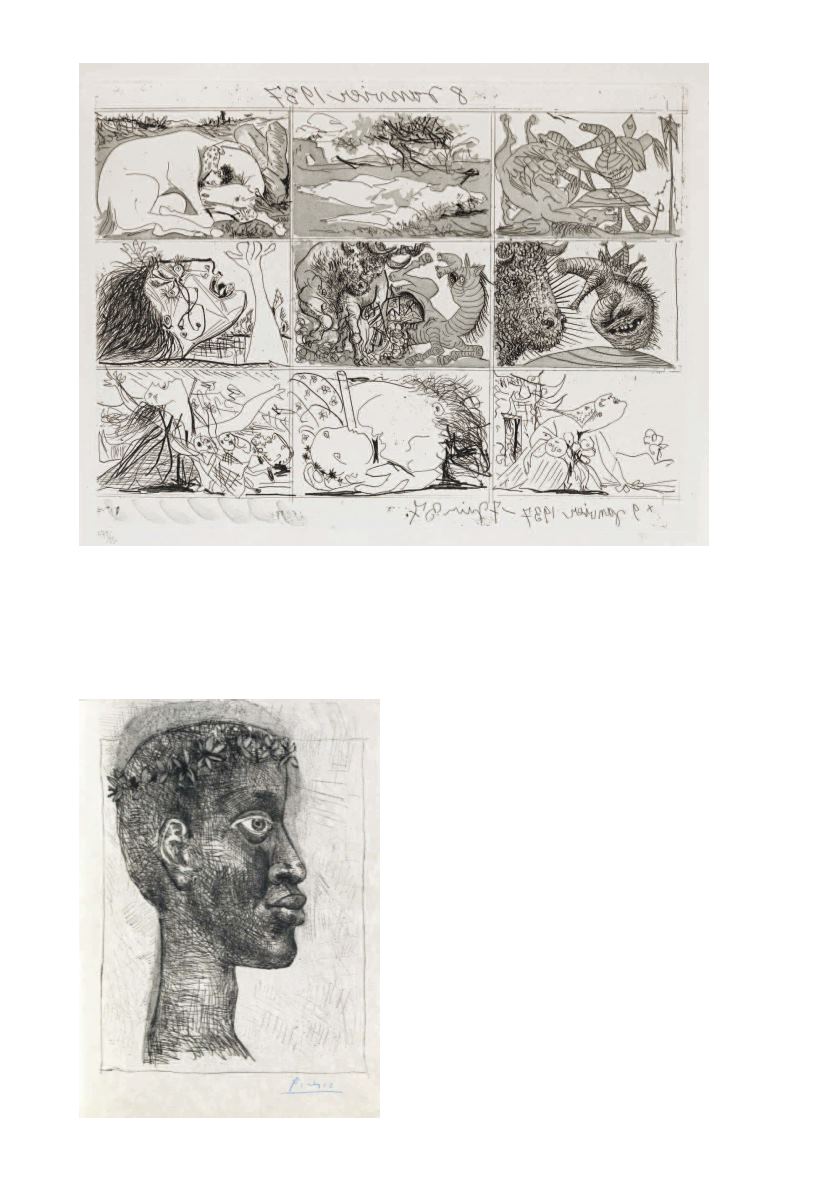

438
●
PABLO PICASSO
Negre, negre, negre . . . Portrait d’Aimé Césaire
.
Drypoint on
Japon nacré
, folded frontispiece/
title page sheet, 1949. 350x241 mm; 13
3
/
4
x9
1
/
2
inches, full margins. Edition of 219. Signed
in blue crayon, lower right. Published by
Editions Fragrance, Paris. From
Corps Perdu
by Aimé Césaire. A superb impression.
Picasso’s frontispiece portrait of Césaire
(1913-2008) as a laurel-crowned poet laureate.
Césaire, the Parisian (via Martinique) central
figure of the
négritude
movement in
Francophone literature during the 1930s,
met Picasso in 1948 at the Communist-led
World Congress of Intellectuals for Peace, in
Wroclaw, Poland. They connected on their
shared interest in Communist politics and
African art. Picasso and Césaire collaborated
on
Corps Perdu
in 1949-50. Picasso’s 32
drypoints and etchings for the work, many
fusing male and female sexual organs with
plant-inspired forms, illustrate Césaire’s text
which explores society’s brutal positing of
the black man as half-human, half-beast.
Bloch 633; Baer 841 Bd 2.
[4,000/6,000]
440
438









